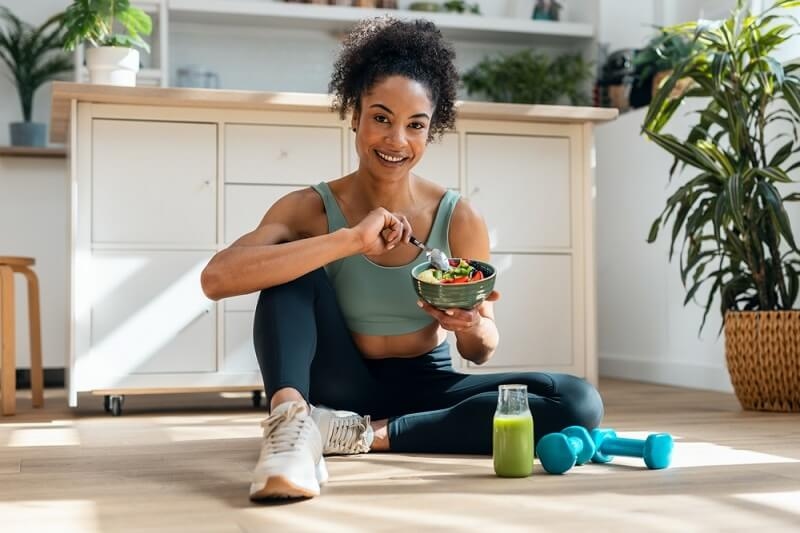
Health is not only about workouts or diets. It is the sum of everything you do daily. The food you eat, how you move, how you sleep, how you handle stress, and how you connect with others all shape your well being. When you start to think holistic fitness, you begin to see that lasting health comes from balance. Not perfection. Not quick fixes. Just consistent habits that work in real life.
This is where a holistic approach to health and wellness becomes the smarter way forward. It focuses on the whole person. Your body, your mind, your habits, and your environment. When these areas support each other, your lifestyle becomes easier to maintain. You feel more stable. More capable. You move better. You rest better. You live better.
The meaning of a healthy lifestyle is often misunderstood. People think it is about being thin or eating clean every day. But a healthy lifestyle is not about strict rules. It is about how you function daily. How well your body responds to stress. How steady your energy feels. How you carry yourself in movement and approach challenges.
A healthy lifestyle includes:
You do not need extreme habits. You need habits that you can repeat without friction. That is the real meaning of sustainable health.
Must Read: Physical Activity and Mental Health for Better Living Today

A holistic approach to health and wellness matters because your body does not work in separate parts. When one area is weak or neglected, the others feel it. Poor sleep affects your mood. Stress affects digestion and recovery. Weak mobility affects your posture and joints. They are all connected.
A holistic approach respects these connections. It encourages:
It is not about doing everything perfectly. It is about being aware of how one habit influences the next. Small adjustments can create noticeable improvements across your life.
When you start to think holistic fitness, your mindset shifts. You stop chasing short term changes and start building long term capacity. Instead of focusing on weight loss alone, you look at posture, movement quality, stress levels, sleep stability, and emotional balance. You become more patient because you understand that real health develops over time.
This shift makes your progress steadier and more reliable. Your energy improves. Your body feels lighter. Your mood becomes level. Your confidence grows because you feel more in control of your lifestyle.
Discover More: Mental Wellness Practices for Healthy Living Stress Relief
Workouts that focus on functional fitness condition your body to operate in a way as if you were doing the real life movements that you do on a daily basis. This type of training promotes to joint health and good posture through development of coordination, strength, stability and balance. The functional training concept teaches body to function as a whole rather than isolating the muscles just to change their appearance.
A functional fitness routine typically comprises:
The goal is to move better in your everyday life. Carry groceries without strain. Climb stairs without fatigue. Sit and stand without discomfort. The benefits show up outside the gym first.
Functional fitness routine should also include the following to become part of a comprehensive health and wellness strategy:
This is how you make training sustainable.
Most people set goals that are either too vague or too extreme. They focus on outcomes like weight or appearance and not on the habits that produce real change. You can create effective healthy lifestyle goals if you make them simple, specific, and realistic.
Here are some examples of grounded goals:
Such small goals are easy to keep but they will have a big impact on your daily mood.
Well-designed healthy lifestyle goals also back up your functional fitness routine, diet and sleep. When everything works together, your effort feels like a smooth ride rather than a stressful one.
When you adopt this mindset, several things change:
This is how stability develops. This is how health becomes part of who you are.
Here is a simple weekly layout that blends physical training, recovery, and lifestyle balance:
Monday
Strength training focused on full body movements
Light stretching for mobility
Tuesday
Low to moderate intensity cardio
Balanced meals with emphasis on protein and vegetables
Wednesday
Active recovery through walking or light yoga
Early bedtime for improved sleep quality
Thursday
Strength training focused on core stability and controlled movement
Breathing practice or stress reduction routine
Friday
Mixed conditioning and mobility
Hydration check and nutrient-dense meal planning
Saturday
Outdoor movement or a social physical activity
Time spent with people who add positive energy
Sunday
Rest day
Meal prep, reflection, gentle stretching
This supports a holistic approach to health and wellness without overextending your time or energy.
Explore More: Building a Balanced Diet and Lifestyle for Long-Term Health
To live healthy, you need a system that works with your real life. When you think holistic fitness, you build that system piece by piece. You eat in a way that fuels you. You move in a way that strengthens you. You rest in a way that restores you. You connect in a way that keeps you grounded. You set healthy lifestyle goals that make sense for you.
Small decisions add up. The results show in how you feel, how you move, and how you live each day.
This content was created by AI